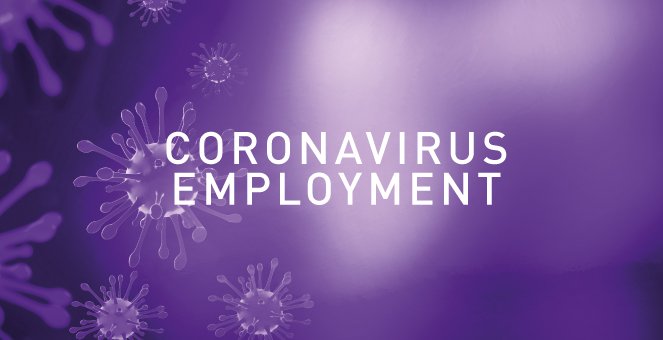Further information for businesses and employees about government’s furlough scheme.
HMRC has updated its set of guidance documents on the Coronavirus Job Retention Scheme (CJRS) which has now been extended from 31 October 2020 to 31 March 2021.
On Friday 13 November 2020 HMRC also issued its fourth Treasury Direction: The Coronavirus Act 2020 Functions of her Majesty’s Revenue and Customs (Coronavirus Job Retention Scheme) Direction which:
- Extends the CJRS from 1 November 2020 until 31 March 2021;
- Details how the CJRS will operate between 1 November 2020 and 31 January 2021 (a fifth Treasury Direction covering February and March 2021 is to be published in due course); and
- Withdraws the Coronavirus Job Retention Bonus.
The 32-page Treasury Direction sets out the legal framework for the CJRS and covers a wide range of issues including: eligibility; furlough agreements; claim periods; reference salaries; calculating the usual hours of work; permitted activities during furlough; business succession (including TUPE); PAYE scheme reorganisations; time limits for making claims; and publication of CJRS claimants’ details.
From 1 November 2020 the CJRS will largely operate as it did prior to the end of August 2020. However, there are some key differences between the CJRS pre- and post-extension, which include:
- HMRC will publish information about CJRS claims on the internet. This includes the name of the employer and a “reasonable indication” of the amount claimed. An exception may be made for employers who can show that such publication would expose their workforce to “serious risk of violence or intimidation”;
- Furlough agreements must be in place before the start of the relevant claim period (but may be varied during the claim period). It should be sufficient to update an earlier furlough agreement, provided it is updated before the employee is furloughed under this phase of the CJRS. There was a short opportunity for employers to backdate agreements (prior to 13 November 2020), but this has now elapsed;
- Claims may not be made for any day that an employee is serving notice between 1 December 2020 and 31 January 2021 (the latest guidance says this means both statutory and contractual notice periods).
Other notable points from the guidance include:
Eligibility
- Employers do not need to have previously used the CJRS to be eligible to claim under the extended scheme. There is also no limit on the number of employees an employer can claim for in respect of claim periods from 1 November 2020 onwards;
- Employers can claim for an employee on any type of contract who were employed and on the payroll on 30 October 2020. The employer must have made a PAYE Real Time Information (RTI) submission between 20 March 2020 and 30 October 2020 notifying HMRC of a payment of earnings for the employee. However, it is not necessary for the employee to have been furloughed before.
Making claims
- Claims from 1 November 2020 must be submitted by 11.59 pm, 14 calendar days after the month the employer is claiming for. If this time falls on a weekend, claims should be submitted on the next working day. This means that claims for November 2020 must be submitted by 11.59 pm on 14 December 2020;
- HMRC may accept a claim made after the relevant deadline if the employer has a "reasonable excuse" for failing to make the claim in time and then claimed "without delay" after the excuse no longer applied. There is no indication given in the guidance of what may amount to a reasonable excuse. However, HMRC will not consider a reasonable excuse until after the deadline for making a claim has passed, meaning it will not be possible to obtain advance clearance for missing the deadline. Employers will therefore be taking a risk in delaying a claim and relying on this exemption.
Amending claims
- Employers will only be able to amend claims for periods after 1 November 2020 if they do so within 28 calendar days of the month the claim relates to (unless this falls on a weekend, in which case the deadline is the next working day);
- Further guidance and examples - including how to calculate an employee's reference pay and usual hours where they were not employed on 19 March 2020 or have not previously been furloughed - can be found in the guidance.
Comment
Employers who have been contemplating redundancies may have welcomed the news that the furlough scheme is being extended. However, employers will need to consider how the CJRS impacts their businesses, and their plans in respect of any re-hired or potentially redundant employees, both when the scheme ends in March 2021, or when the scheme changes before then. This is particularly the case after 1 December 2020 when CJRS claims cannot be made in respect of any employee who is serving notice. Employers may therefore need to act swiftly to avoid this hampering any plans.
Many employers may also be reluctant to use the scheme after hearing the news that their CJRS claims will now be published. Employers will need to consider how this may impact their business.
The government has signalled that further changes will be made to the CJRS in a fifth Treasury Direction. Therefore, while the continuation of the scheme may have provided welcome relief to many employers and employees, there is still a lot of uncertainty about the level of support the scheme will provide in the coming months.
Please note: Nothing in this article constitutes legal advice and we are not liable for any reliance on the information provided. This is a rapidly changing subject, and whilst correct at the time of writing, circumstances may have changed since publication. Please refer to Gov.uk for up-to-date advice on the Government’s response to this issue.
To find out more about anything covered in this article, or to discuss the potential impact of COVID-19 on your business, please contact Kerrie Hunt or another member of Thrings’ Employment and Immigration team.
